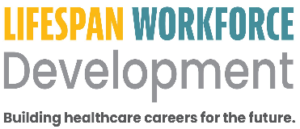Important Findings from Lifespan’s Justice-Impacted Cohorts
During a recent Thought Leadership session we explored how Lifespan, Rhode Island’s largest employer and healthcare system, developed Pathway to Employment (PTE). This innovative work-based learning program equips individuals affected by the criminal legal system with the skills and connections needed to secure employment in this rapidly expanding industry.

Here are the findings they shared with us:
Thoroughly vet Community Based Organizations (CBO): Clearly define roles
and responsibilities to enhance clarity and ensure alignment with shared
upfront goals. If CBOs are the referral resource, ensure that the candidates are
“ready” for the opportunity, not just in the greatest “need” for the opportunity.
Conduct comprehensive candidate vetting to ensure the participant possesses
a fundamental level of work readiness and motivation aligned with employer
standards, not just CBO standards.
Use Cohorts When Possible: Using cohorts offers chances for collaborative
learning, fostering connections, and establishing internal support systems.
Establish Multiple Touch Points: The structure and engagement of
participants are crucial for success. Maintaining multiple touchpoints at each
stage (recruitment, onboarding, training, post-program) is vital for building
relationships, trust, and ensuring retention.
Set Clear Expectations and Foster Continuous Learning: Establish and
promptly review program expectations, ensuring consistent job coaching
throughout. Be in constant pursuit of learning and improvement. Gathering
participant feedback throughout the process is essential to tailor the program
to the specific.
Use an Employer-Driven Approach to Training & Preparation: Provide
employer-driven work readiness and emotional intelligence training before
and during employment. Frame these sessions with discussions and goal
setting to provide structure and guidance. If employers are not directly
providing the training, they must have input or approve any work readiness
programs.
Establish a Feedback Loop: Ensure transparent communication regarding
compliance and accountability. Implement a formal system to hold
participants accountable. Provide feedback as close to the moment as possible,
including an action plan for improvement or recognition for a job well done.
Assess and Monitor Capacity Periodically: All parties must maintain a realistic
understanding of their capacity, role, and delivery of services. Reentry
workforce programs and participants have high needs, necessitating regular
evaluations of staffing and resources capacity. (This assessment should extend
not only to your organization but to all partners as well.)
